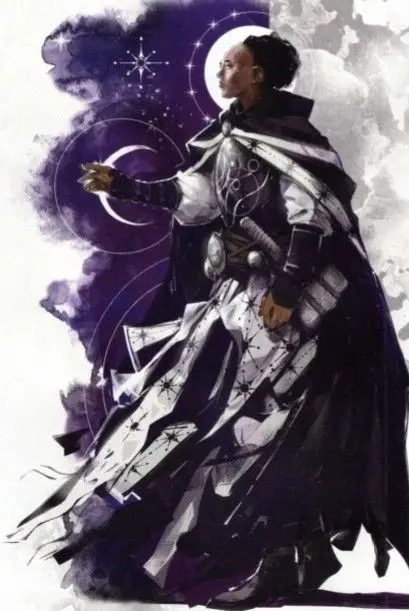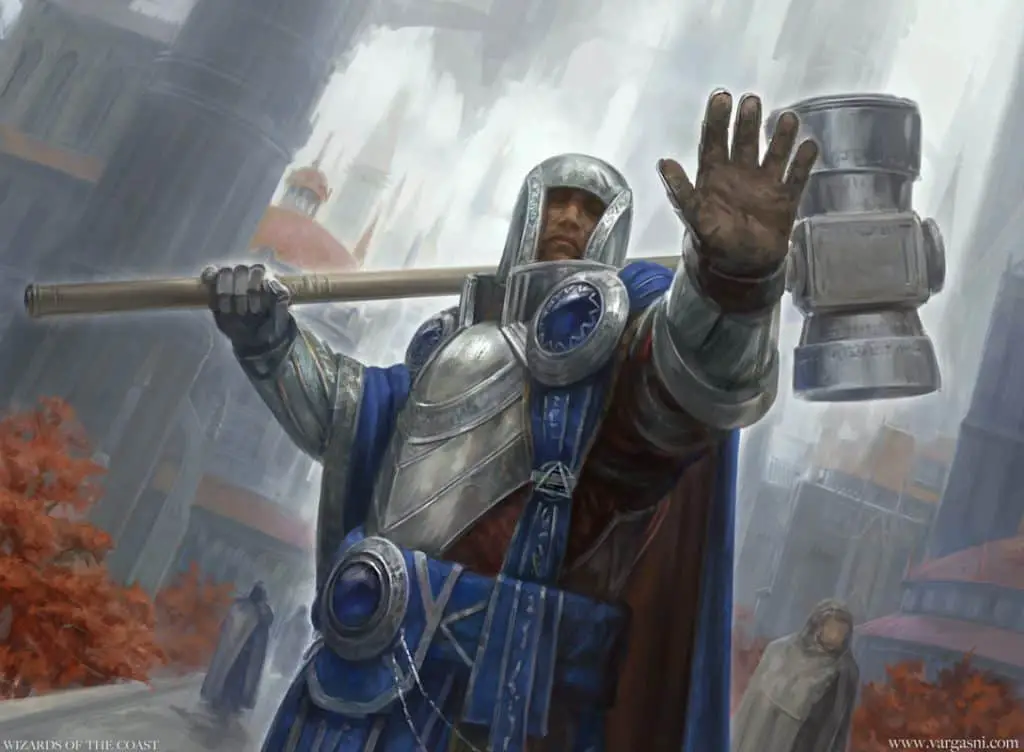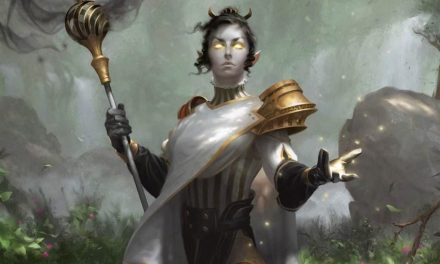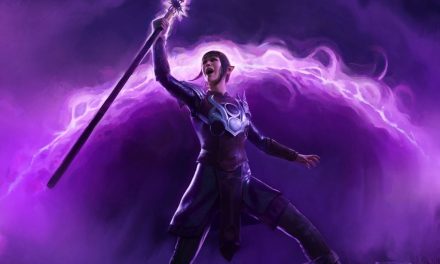Twilight Clerics revere the calm period between the day and night. When things begin to settle down and the world begins to fall asleep, these Clerics are vigilant guardians against whatever threats might lurk in the darkness.
They are protectors and shepherds of the people in their communities. In even the darkest moments, these Clerics shine brightly as a guiding beacon for others.
Do you have the vigilance to protect your allies and the demeanor to comfort them when all hope seems lost?
Then light your lantern, dear reader!
This is the full guide to the Twilight Cleric in D&D 5e!
What is the Twilight Cleric in D&D 5e?
Few things are as important as getting a good night’s rest. For the people of the many villages, cities, and towns in D&D, it’s a chance to recover after a hard day’s work.
But while the night does bring an opportunity to rest, it can also be incredibly dangerous.
Who knows what kinds of creatures may take advantage of the darkness to attack? Undead, werewolves, clever goblins, or even an invading army could threaten the safety of the slumbering community.
That is where the Twilight Cleric is most important.
To those that they protect, they offer comfort, healing, and guidance. While the people of their community slumber, the Twilight Cleric keeps a watchful eye over them.
But these Clerics are more than just sentries!
They see through the darkness and can illuminate whatever might be hiding in it. Calling upon their divine magic, Twilight Clerics rally and bless their allies to stand against whatever threats might appear.
Popular deities for Twilight Clerics include:
- Helm, the God of Protection and Vigilance
- Selûne, the Goddess of the Moon
- Ilmater, the God of Endurance, Perseverance, and Martyrdom
- Yondalla, the Halfling Goddess of Protection and Fertility
- Mishakal, Goddess of Healing and Compassion in the Dragonlance setting
The Twilight Cleric was published in the fantastic Tasha’s Cauldron of Everything. It appears alongside the Order Domain and Peace Domain Clerics.
Role in the Party
Twilight Clerics fill an interesting role in their party.
They are very heavily geared towards supporting their allies. Granting an improved darkvision, initiative bonuses, temporary hit points, and healing to their allies, Twilight Clerics are excellent at keeping their party in tip-top shape.
Additionally, they have an excellent spell list with a great mix of offensive, defensive, and utility options. (We’ll take a detailed look at the spell list in a moment.)
It might be easy to think of Clerics as hanging out in the backline while buffing and supporting their allies. But Twilight Clerics are also incredibly durable!
Gaining proficiency with both heavy armor and martial weapons means that the Twilight Cleric is able to stand on the frontlines as a beacon against whatever horrors the party might encounter.
If the frontline is already covered, the Twilight Cleric is an exceptional guard for the party’s flank.
Not only are they heavily armored, but their spells like Faerie Fire and Moonbeam can entirely remove enemies’ element of surprise!

Twilight Cleric Features 5e
You know, I try to write these guides in a fairly unbiased way.
For each spell or feature, I’ll usually add some thoughts on how to use it, but I try to save my opinions for towards the end of the article.
But I just have to say it right now: the Twilight Cleric’s features are so freaking cool. They’re thematic, useful, and incredibly impactful while still really capturing my imagination.
I can’t wait to dive into the finer details about these but had to share some hype with you first!
Also Check Out: Using Turn and Destroy Undead in D&D 5e!
Twilight Domain Spells
Every Divine Domain (Cleric subclass) also comes with its own unique list of bonus spells. These are called Domain Spells.
You gain these Domain Spells when you hit the level on the table below. These spells are considered to always be prepared for you and they don’t count against the number of spells you can prepare each day.
Some Domain Spell lists might include spells that aren’t normally on the Cleric spell list. In these cases, the spell counts as a Cleric spell for you and uses your Wisdom modifier as the spellcasting ability.
So, let’s check out what you get for choosing the Twilight Domain!
| Cleric Level | Domain Spells |
| 1 | Faerie Fire, Sleep |
| 3 | Moonbeam, See Invisibility |
| 5 | Aura of Vitality, Leomund’s Tiny Hut |
| 7 | Aura of Life, Greater Invisibility |
| 9 | Circle of Power, Mislead |
Thoughts on the Twilight Cleric Spell List
I’m very impressed with the Twilight Domain’s list!
Faerie Fire is just a simply fantastic spell. It’s great for countering invisible enemies but giving your allies advantage on their attacks against enemies who fail the save is massively impactful.
At low levels, Sleep is incredibly powerful. A single casting can end many encounters. You’ll get less use out of it as you level up, but it’s still an excellent addition to this spell list.
Maybe it’s because Druids are my favorite class, but I absolutely love Moonbeam and it’s great to see it on the Twilight Cleric’s spell list. Especially if enemies are clustered together, this can be devastating.
In combat, Faerie Fire is a good way of dealing with invisible enemies. But you’ll likely have situations where you need something more reliable and with a longer duration. See Invisibility is situational but nice to have ready when you need it.
Leomund’s Tiny Hut is the go-to spell when the party needs to rest, so that’s great to have ready. Aura of Vitality is okay but better used to pick up allies that keep getting knocked unconscious or for out-of-combat healing when the party can’t take the time for a short rest.
Aura of Life is best when fighting creatures that deal necrotic damage and/or like to reduce hit point maximums. It can also be good if your allies keep getting knocked unconscious. While that’s more situational, Greater Invisibility is an excellent spell to have and is one of the best spells in the game.
You’ll be glad to have Circle of Power if you’re going against an enemy spellcaster. It’s normally exclusive to Paladins so it’s cool to see here. Mislead is a fun but ultimately very situational spell that relies heavily on the situation and your own creativity.
Bonus Proficiencies
Considering the role that Twilight Clerics play in their party and communities, you’re going to want some extra protection!
You gain proficiency with martial weapons and heavy armor.
Proficiency with martial weapons opens up a ton of new options for you. Most martial weapons are stronger than simple weapons.
Longswords are always a safe bet and you’ll still have a free hand for a shield to boost your Armor Class. But you can also pick up a heavy hitter like a Greatsword or a Halberd (especially with the Polearm Master feat) if you want to focus more on damage.
Speaking of armor though…
Getting access to heavy armor is very nice. Clerics tend to have several abilities that want their attention, Wisdom, Constitution, and Strength are common high priorities. So being able to mostly ignore your Dexterity in favor of wearing heavy armor helps a lot.
If you don’t want to ignore Dexterity, consider just wearing medium armor, dumping Strength, and capping your Dexterity at 14.
That said, I’d personally recommend the first option. It will help you stay on the frontlines of the party where you can have the most impact.
Related: Armor Class in D&D 5e Explained!
Eyes of Night (Level 1)
Who’s afraid of the dark? Certainly not you!
You have darkvision out to a range of 300 feet. In that radius, you can see dim light as if it were bright light and in darkness as if it were dim light.
As an action, you can share the darkvision of this feature with willing creatures you can see within 10 feet of you, up to a number of creatures equal to your Wisdom modifier (minimum of one creature).
The shared darkvision lasts for 1 hour. Once you share it, you cannot do so again until you finish a long rest, unless you expend a spell slot of any level to share it again.
Darkvision is actually pretty common in D&D 5e with only a select few races like Humans, Halflings, and Dragonborn not getting it by default. That said, you’ve got 300 feet of darkvision vs the standard 60 feet which is crazy!
Being able to share this darkvision with your allies for an entire hour can be incredibly useful. Even if they already have darkvision, they’re now getting five times the visibility range!
Whether you’re scouting, standing guard, or trying to set up an ambush to take some enemies by surprise, this is great to have.

Vigilant Blessing (Level 1)
Want yet another feature at first level? The Twilight Domain has got you covered!
As an action, you give one creature you touch (including possibly yourself) advantage on the next initiative roll the creature makes. This benefit ends immediately after the roll or if you use this feature again.
Initiative orders can really mess up a party’s go-to tactics sometimes.
Some characters really benefit from being able to act early in combat like Rogues (especially Assassin Rogues) or spellcasters who can deal massive damage to enemies that are grouped together with a single spell.
Whatever member of your party most relies on being able to act early in combat will greatly appreciate this feature. The absolute minute that combat ends, you want to go ahead and throw this on someone so they’re ready for the next initiative roll.
Depending on how you build your character and your party’s composition, it might even make the most sense to give this blessing to yourself!
We’re barely even into discussing the Twilight Cleric’s features and this is already mind-numbingly incredible!
Channel Divinity: Twilight Sanctuary (Level 2)
And things keep getting even better!
As with all Clerics, you’re getting a new way to use your Channel Divinity feature from the Twilight Domain.
Twilight Sanctuary is absolutely a core feature for this subclass and it’s so good that it’s nearly broken.
As an action, a sphere of twilight emanates from you. The sphere is centered on you, has a 30-foot radius, and is filled with dim light. The sphere moves with you, and it lasts for one minute or until you are incapacitated or die.
Whenever a creature (including you) ends its turn in the sphere, you can grant that creature one of these benefits:
The creature gains temporary hit points equal to 1d6 + your Cleric level.
You end one effect on it causing it to be charmed or frightened.
There’s a lot going on here, so let’s break it down.
First up, you’re providing dim light in a 30-foot radius which can really come in handy despite your darkvision.
Second, you’re choosing a benefit to give every creature (including yourself) at the end of each of their turns. Since this last for a minute, that’s up to 10 rounds per creature. If you’ve got a party of 5 and they all stay next to you, you’re dishing out 50 benefits in the scope of one minute.
For this next part, you absolutely need to read my article that covers how temporary hit points work. It’s that important.
Ending the charm and frightened effects is useful but self-explanatory. It will shut down many types of fey, undead, and spellcasters.
But the real benefit here is the temporary hit points. In fact, let’s give that its own section in this guide.

Twilight Sanctuary and Temporary Hit Points
The temporary hit points you’re giving out with Twilight Sanctuary are so good that it’s hard to overstate.
The number of temporary hit points you’re providing increases as you level up. That means that this will never be useless.
Even if the temporary hit points were a one-time thing, this would be great.
But those temporary hit points are being applied every round at the end of a creature’s turn. At level 2 you’re giving them a buffer of 3 to 8 (average of 5) temporary hit points PER ROUND. At max level, that’s an average of 23 temporary hit points PER ROUND.
For fun, let’s say you roll average with each application, the combat lasts 10 rounds, and your party of 5 stays within your Twilight Sanctuary.
That’s 5 temporary hit points each round for each of the 5 party members for a total of 250 damage negated by temporary hit points (50 for each member). And that’s just at level 2!
At level 20, that’s 23 temporary hit points to 5 creatures each round for 10 rounds which means one use of Channel Divinity can eat an unprecedented 1,150 points of damage ON AVERAGE.
Make sure that you are keeping up with the temporary hit points that you’re providing to the party.
Also, they don’t HAVE to take the new total of temporary hit points. If you gave them 10 temps last round but only rolled for 6 this round, they can keep the 10 assuming they didn’t take any damage. (Remember: temporary hit points don’t stack.)
Steps of Night (Level 6)
The tactical options that open up for you with a flight speed are virtually limitless. Being able to take to the skies without using a spell slot is incredible.
As a bonus action when you are in dim light or darkness, you can magically give yourself a flying speed equal to your walking speed for 1 minute.
You can use this bonus action a number of times equal to your proficiency bonus, and you regain all expended uses when you finish a long rest.
The limiting factor here is that you must be in dim light or darkness. But that’s common and you get several uses of this per day. For the low cost of a bonus action, this is exceptional and will certainly come in handy numerous times throughout your adventure.
I first read this with the assumption that you can fly as long as you’re in darkness or dim light.
It led to a certain risk factor of the environment suddenly getting bright for one reason or another causing you to fall like Icarus when he flew too close to the Sun.
But as I’m writing this, I’m realizing that you just need to be in dim light or darkness to grant yourself the flying speed. That’s even better!
If you want to fly around a sunny beach, just find yourself a nice dark cave first to grant yourself flying then take to the skies for the next minute.
Divine Strike (Level 8)
Clerics may not get Extra Attacks like many other classes, but that doesn’t mean they can’t function well in melee combat.
Divine Strike adds extra radiant damage to your weapon attacks. You might not be swinging your weapon as often, but it’s going to really hurt when you hit!
Once on each of your turns when you hit a creature with a weapon attack, you can cause the attack to deal an extra 1d8 radiant damage. When you reach level 14, the extra damage increases to 2d8.
Radiant damage is incredibly reliable, so you’re unlikely to encounter enemies who are resistant or immune to it.
As a Cleric, you’re very capable of combining melee combat and spellcasting to devastating effect. Mix in your proficiencies with marital weapons and heavy armor and you’ve got a Twilight Cleric who can stand at the front of the party with no problem!
Twilight Shroud (Level 17)
So we already covered in length why Twilight Sanctuary is awesome. But that begs the question: what if it was even awesome-er?
You and your allies have half cover while in the sphere created by your Twilight Sanctuary.
Having half cover gives a creature an extra +2 AC.
So, in addition to the huge chunk of temporary hit points your allies are gaining each round, they’re also getting an extra buff to their Armor Class!
Is it possible for the party to still get wiped? I guess… But I’d be terrified of whatever was capable of doing so!
As long as you’re keeping your friends close and making sure to always have a Channel Divinity ready, there’s virtually nothing your party can’t defeat.

Connections
Twilight Clerics serve an important role in their communities. Thankfully, this role sets them up perfectly for joining a party of heroes.
As vigilant protectors, they are capable of seeing the “bigger picture” of things. They understand that there are evil and terrifying forces that wait until night falls to strike.
The nature of the Twilight Cleric’s role fits into the archetype of a shepherd watching over their flock.
This might apply to how they view the party, but it can also be exactly what spurs them to become an adventurer in the first place. To protect the people of their community, they might need to go on a quest that will take them far from home.
Whatever the larger situation and call-to-adventure is, a Twilight Cleric would be moved to join a party as a type of protector. They can offer healing, support, and a guiding light to those they watch over.
The Twilight Domain really lends itself to a very stoic type of character. However, stoic does not mean that the character doesn’t act with compassion for the well-being of those around them.
When you’re making a Twilight Cleric, put extra focus on their place within their community and the role that they serve.
How does that connect them to their home community and translate to how they connect with the other members of the party?
In the grander scale, how does the call to adventure take precedence over their duty as a watchful shepherd at home?
Is the Twilight Cleric Good?
The Twilight Cleric is amazing at every tier of play and one of the most powerful subclasses in all of D&D 5e. There are very few subclasses that I can think of off-hand that can have this level of impact at every level.
In fact, I’ve even seen long conversations online of DMs trying to figure out how to deal with a Twilight Cleric in the party. Some have even gone so far as to not allow them in their game.
While I think that’s excessive, there is no denying the impact that a Twilight Cleric can have on the game.
Between the Twilight Domain features, the core Cleric features, and the Cleric spell list, you can easily make a Twilight Cleric that can shine in just about any situation imaginable.
It’s about as close to being “broken” as I have seen in D&D 5e, but it is still balanced.
The strongest thing the Twilight Cleric has is their Twilight Sanctuary. Especially if many of the party are playing “squishy” characters, those temporary hit points make a huge difference.
Vigilant Blessing lets you tilt the odds in your party’s favor when it comes to initiating combat. You will want to always have this active on someone, so make it a habit.
Start Channeling Divinity for your Twilight Sanctuary once combat starts unless it’s likely to end quickly. With your party buffed and ready, you’re free to attack, support, or cast spells as necessary!
Want More? Check out my ranking of every Cleric subclass in D&D 5e!
Conclusion – Twilight Cleric in D&D 5e
Clerics are just fun in general, but the Twilight Cleric absolutely breaks the mold. It’s got such a fun theme that gives you a ton of ways to build a character around it.
Meanwhile, it’s got the mechanics to be incredibly impactful in pretty much any party.
What are your thoughts on the Twilight Cleric in D&D 5e? Got a character concept you want to share or questions about this subclass? Let’s chat in the comments!
Want all the latest player guides, DM tips, news, reviews, and more for D&D 5e? Sign up for the Tabletop Joab newsletter below!
You can also follow me on Facebook and Twitter.
If you found this article helpful and want to support the site, you can buy me a coffee here! (It’s not expected, but very appreciated!)









